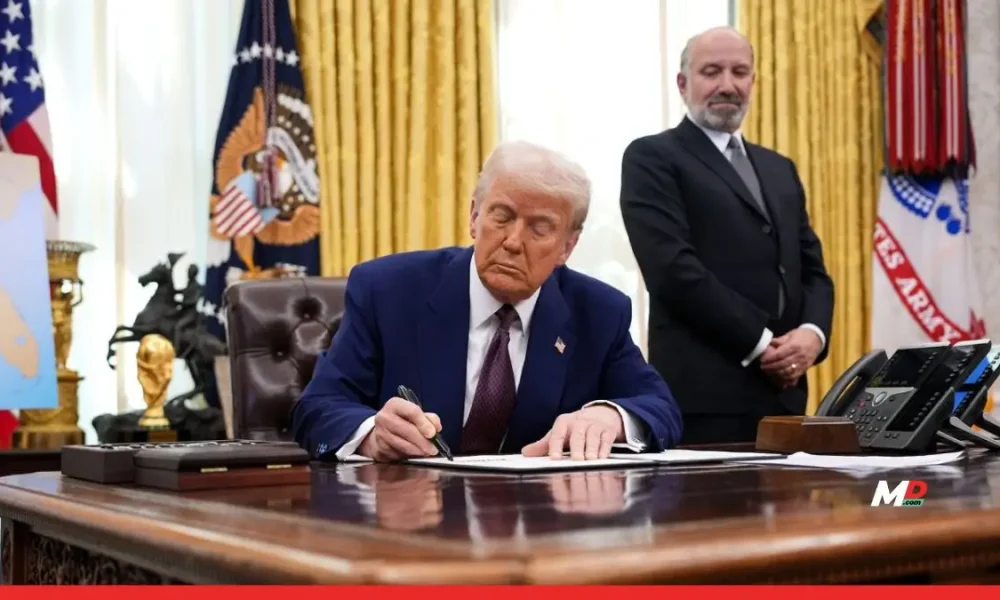
How Trump's Tariffs Can Boost India's Economic Growth
The introduction of tariffs by former U.S. President Donald Trump sent ripples through the global economic landscape. While the intention was to protect American industry and reduce dependency on imports, the move created unexpected global trade dynamics. As countries scrambled to adjust to the changing trade environment, India found itself in a unique position to potentially benefit from these shifts. With strategic foresight, India can leverage these tariffs to bolster its economic growth.
Understanding Trump's Tariffs
A Brief Overview
Trump's tariffs primarily targeted China, sparking a trade war between the world's two largest economies. These tariffs, which imposed additional duties on a wide range of Chinese goods, were designed to pressure China into changing its trade practices. However, the consequential disruptions in the global supply chain presented opportunities for other countries, including India.
The Impact on Global Trade
The onset of these tariffs led to increased costs for Chinese goods imported into the United States. This situation compelled many U.S. companies to reassess their supply chains and explore alternative sourcing destinations. India, with its vast pool of resources and growing manufacturing capabilities, emerged as a potential key player to fill the gaps left by disrupted trade links with China.
India's Manufacturing Advantage
The Rise of the 'Make in India' Initiative
India's government has long been pushing the 'Make in India' initiative, aimed at transforming the country into a global manufacturing hub. This initiative encourages both domestic and international companies to manufacture their products in India. With the imposition of Trump's tariffs, the momentum behind this movement has only accelerated. Designed to simplify regulatory frameworks and attract foreign investment, 'Make in India' has become more relevant than ever in the wake of the trade war.
Strategic Sectoral Shifts
The tariffs have opened up opportunities for India to excel in various sectors such as electronics, textiles, and pharmaceuticals. U.S.-based companies, looking to avoid tariffs, are increasingly considering relocating their production facilities to India. This shift is not just a short-term response but a long-term strategic realignment that could significantly boost India's industrial output.
Benefits to India's Economy
Job Creation and Economic Diversification
As manufacturing capabilities expand due to increased foreign investment, India stands to gain immensely in terms of job creation. With more jobs, there is an expected rise in household incomes, leading to enhanced consumer spending and a vibrant domestic market. Furthermore, a diversified industrial base will strengthen India's resilience against future global economic shifts.
Increased Foreign Direct Investment (FDI)
The trade tensions have made India an attractive destination for foreign investors. The government has taken steps to make the business environment more conducive to foreign investments, providing incentives to companies relocating their operations. By capitalizing on this trend, India can significantly increase its foreign direct investment inflow, fueling further economic growth.
Challenges to Overcome
Infrastructure and Regulatory Bottlenecks
Although the opportunities are significant, India must address certain challenges to fully reap the benefits. Insufficient infrastructure and complex regulatory frameworks can deter potential investors. The need for a modernized infrastructure network and streamlined regulatory processes is crucial to enhancing India's attractiveness as a manufacturing hub.
Skilled Workforce Development
With a shift in the manufacturing landscape, there is an elevated demand for a skilled workforce. India must invest in education and training programs to equip its population with the skills required to meet the needs of international manufacturers. Collaborations with manufacturing giants can also aid in developing specialized training programs.
Strengthening Bilateral Relations
India-U.S. Collaboration
To maximize the benefits from the shifts in trade policy, strengthening bilateral relations between India and the United States becomes imperative. Mutually beneficial trade agreements can pave the way for smoother economic cooperation. By deepening political and economic ties, both countries can bolster their positions on the global stage.
The Role of Policy Reform
India's policy reforms can further enhance its compatibility with U.S. trade interests. Implementing transparent and predictable policies, coupled with tax reforms, could greatly improve India's trade dynamics. These reforms would not only attract U.S. companies but also facilitate trade with other nations affected by the tariffs.
Long-term Strategic Gains
Becoming a Global Manufacturing Hub
With the right policies and strategic investments, India has the potential to eventually rival manufacturing powerhouses like China. By enhancing its manufacturing capabilities, India can carve out a significant share of the global manufacturing market. This transition could lead to a sustained economic boom, propelling India into a new era of growth and prosperity.
Innovation and Technological Growth
The influx of international companies can lead to a culture of innovation and technological advancement within India. As external entities bring in new technologies and management practices, there can be a positive spillover effect on local businesses. This innovation-driven growth could help India enhance its global competitive edge.
Conclusion
Trump's tariffs may have initially appeared as a challenge for global trade, but they present an opportunity for India's economic growth. Through careful strategy and policy reform, India can attract investments, enhance its industrial base, and expand its role in global supply chains. By addressing infrastructure, regulatory, and workforce challenges, India stands poised to convert these tariffs into a hidden opportunity for substantial economic development.


